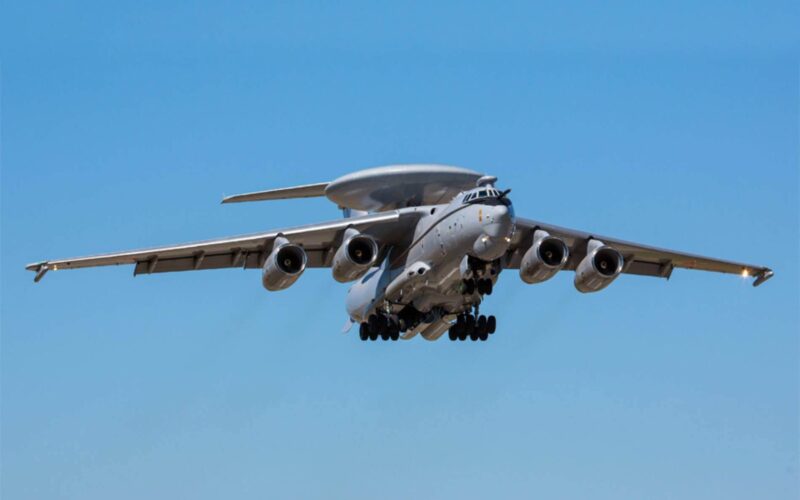Beriev A-100 Premier, an airborne early warning and control (AEW&C) aircraft intended to rival NATO’s AWACS planes, conducted its first flight with the radar on.
The news was announced by state news agency TASS. The flight happened on February 10, 2022, and was the first in the series of test flights that are slated to be carried out through the year.
No official information about the capabilities of the aircraft was revealed, although TASS called the flight a “technological breakthrough” that, along with the Tu-214ON, can “frighten the US”.
The Tu-214ON is an observation aircraft initially intended for Open Skies Treaty missions. The treaty allows mutual aerial monitoring of military movements and strategic installations of the signatory countries. The use of digital electro-optical sensor by the Tu-214ON had been at the center of a dispute between the United States and Russia in 2018. The two nations eventually withdrew from the Treaty in 2021.
The development of the A-100 started in 2013. The aircraft is based on the Il-76MD-90A, a heavily modernized version of the Il-76 heavy cargo plane.
Converted by Beriev company, the A-100 features a large active electronically scanned array (AESA) radar. According to preliminary information revealed in 2014, the radar was planned to be able to track up to 300 targets at distances up to 650 kilometers.
It was intended to be superior to the Boeing E-3 Sentry with its AWACS system, the primary AEW&C aircraft of the United States. In 2012 Aviastar SP, the factory that conducted the conversion of Il-76 into the A-100, was contracted to manufacture 39 A-100s. It is unknown if this number has changed over the years.
In 2020, Russia announced that the testing of the prototype of the A-100 is expected to be completed in 2024. The same year, mass production of the plane is expected to start.
The A-100 is intended to replace the Beriev A-50, Russia’s current primary AEW&C system which entered service in 1984. Although 40 of these aircraft were produced, only around 16 are thought to be operational with the Russian Air Force, with some of them being upgraded A-50Us.
While based on the same platform as the A-50, the A-100 is expected to have longer range and loitering time, as well as increased resistance to electronic jamming, an ability to track both air and ground targets, and have advanced data sharing capabilities.

